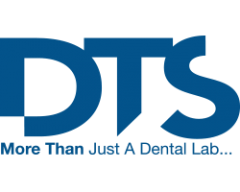This week DTS caught up with Maximilian Stockkamp, Business Development Manager of CAD/CAM at VITA, to discuss the digital workflow, new production techniques and the first hybrid dental ceramic material in the world. Find out more about the revolutionary VITA ENAMIC below!
How does digital manufacturing differentiate VITA ENAMIC from other traditionally manufactured restorations?
New technologies are now part of everyday life in the dental industry and are used in nearly all areas, from documentation of the initial situation, to design, production using 3D printers or milling machines and even finishing. Digital production technologies can make fabrication of restorations more cost-effective.
The VITA ENAMIC hybrid ceramic material combines the positive attributes of ceramics and composites, allowing for an even more efficient production process. The polymer network provides the dominant ceramic network with a certain amount of elasticity similar to that of dentin and therefore enables significantly higher levels of continuous load. Thanks to exceptional edge stability of the material, detailed and accurate grinding and milling results (wet and dry) can be achieved. The excellent milling properties of VITA ENAMIC guarantee that restorations can be fabricated more quickly as well as wear and tear on milling tools can be minimized. The hybrid ceramic is already at full strength and can be seated directly after polishing, no firing process required. Shade characterization and customization are performed with matching light-curing materials.
What makes VITA ENAMIC stand out from the rest of the VITA range?
VITA ENAMIC is the first hybrid dental ceramic material in the world with a dual-network structure and represents a brand-new class of materials. With this dental material, the dominant ceramic network is reinforced by a polymer network with both networks fully integrated with one another. Thanks to this special manufacturing process, VITA Zahnfabrik has created a product that is unprecedented in the dental market. Because of the exceptionally high elasticity and load capacity after adhesive bonding, the hybrid ceramic is perfectly suited for posterior crown restorations and also allows for a reduction of wall thickness for minimally-invasive restorations. The use of VITA ENAMIC on implants is particularly recommended due to these properties, combined with the abilities of force absorption and the integrated crack-stop function.
In the future, the range of indications for VITA ENAMIC will be extended even further. As a result, the launch of the VITA ENAMIC multiColor block at IDS 2017 is being eagerly awaited. The VITA ENAMIC multiColor block has six coordinated shade layers (2 thicker outer layers and 4 thinner inner layers) in five different, highly translucent VITA 3D MASTER shades. It is especially recommended as an anterior or posterior crown, crowns on implants, and as a veneer.
How can dentists benefit from using VITA ENAMIC in a digital workflow as opposed to a traditional workflow?
First of all, the software and hardware requirements for optimal processing are already met because all VITA CAD/CAM materials are integrated and validated in the most common CAD/CAM systems. Likewise, VITA ENAMIC perfectly meets the requirements for chairside treatment as it allows for fast (1h appointment), easy yet high-quality restorations (100% survival rate based on clinical studies).
For example, as I mentioned earlier, the milling time for VITA ENAMIC restorations with 17 minutes grinding and 24 minutes milling for a fully contoured posterior tooth crown (used system: DMG MORI Ultrasonic 20) is by far the shortest for dental CAD/CAM material. The hybrid ceramic also ensures a long milling tool service life of up to 148 milled crowns for each set of milling tools, making it more cost-effective than similar materials. Also, the material can be easily processed and provides excellent polishing results. Special 2-stage polishing assortments (technical and clinical) were developed for intraoral and extraoral use.
Thanks to the tooth-shaded dental material and excellent light transmitting properties, VITA ENAMIC restorations integrate perfectly into the residual tooth substance and provide a natural shade effect. And with the new multi-layer VITA ENAMIC multiColor, hybrid ceramics will also represent a new dimension in esthetics.
These features meet the ever-growing expectations of patients and help to boost patient satisfaction.
How do you think digital design and production methods have changed the restorations we create?
In general, the current challenges in the markets show that the array of products is becoming more and more differentiated and diverse. Once restricted to specific regions, competition in this changing market is steadily becoming more global, resulting in price competition and a trend toward saturation. As a result of these dynamic changes, especially digitization, manufacturers and suppliers are faced with the challenge of differentiating their products from the large number of similar products on the market in order to serve demanding customers effectively. These dynamic changes allow for more customer involvement in the upstream stages of the value chain, meaning customers can have an influence on early phases of product development, for example.
VITA ENAMIC can even be called a benchmark in this regard. Inspired by the long-held dream of creating a highly esthetic elastic ceramic material, this unrivaled product combines an established range of materials and is well positioned in the middle of the CAD / CAM product range as the perfect answer to customer expectations such as lower waiting times during chairside treatments.
